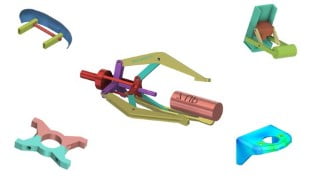Professional Hydraulics and Pneumatics Physics
Learn the components and operations of hydraulic and pneumatic systems in this practical course. Understand the physics behind them and gain expertise in designing these systems. Suitable for designers and A-level physics learners interested in practical applications.
What you’ll learn
- Get start with the component differences between hydraulic and pneumatic systems
- Get start with the operational differences between hydraulic and pneumatic systems
- Master the essential physical principles and design parameter calculations
- Professional design process specification report based on case study
Professional Hydraulic and Pneumatic Physics is a highly practical professional course that adopts the learning model of the Advanced Manufacturing. Here you will understand the components and operations of hydraulic and pneumatic systems in a way that explores physics. The main highlight is that before learning each component, you will fully understand why this component exists? What is the significance of its appearance? What are the serious consequences of missing it? and many more. Physical expertise closely related to hydraulic and pneumatic systems is presented in the physical expertise chapters that follow. From the overview of the theorem background, to the derivation of assumptions, and the final parameter calculation, it aims to teach everyone how to write a logical engineering report. At the end, you will experience the complete design process by applying all the physical knowledge you have learned into the design of the hydraulic press system and the pneumatic plant system.
The outline of this course is as follows:
Session 1: (10 lectures, 1 quiz)
Directionl Control Valve
Session 2: (10 lectures, 1 quiz)
System Structure and Principle
Session 3: (10 lectures, 1 quiz)
Hydraulic System Physics
Session 4: (10 lectures, 1 quiz)
Pneumatic System Physics
Session 5: (2 assignments, 2 quiz)
Hydraulic Press Design and Pneumatic Plant Design
Who this course is for:
- Designer who are interested in the physics behind hydraulic and pneumatic systems
- A-level physics learners who like to learn supporting practical applications
User Reviews
Be the first to review “Professional Hydraulics and Pneumatics Physics”
You must be logged in to post a review.







There are no reviews yet.